As the end of the year approaches, it's a good time to take a look back at the biggest illustration trends of 2017 – and to forecast what we expect to be the most exciting illustration trends of 2018.
Of course, the best illustrators have their own distinctive art styles, and when commissioned they'll work towards fulfilling the creative brief as specified by the client. But none of us exist in a vacuum, and looking back over the past year, it’s possible to identify common themes across some of the best new illustrative work that we've seen.
Whether you decide to put your own stamp on these and push your work in an unexpected direction, or you prefer to avoid popular trends at all costs, it's helpful to know where the industry's at – particularly when it comes to justifying your creative decisions to clients.
Here, then, are some of the hottest illustration trends of 2017 that we’ve noticed over the last 12 months... (And they make an interesting comparison to the biggest illustration trends from earlier in the year.)
01. Playful colours
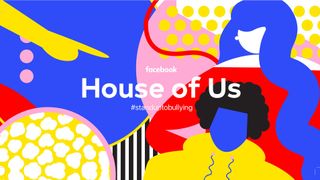
In 2017, illustrators haven’t been shy in using bright and playful colours to bring their work to people’s attention. It’s an illustration trend that can be seen everywhere in editorial illustration, from the eye-catching hues of Berlin-based visual artist Siggi Eggertsson to the chaotically colourful pattern-collages of Hamburg-based illustrator Max Knicker.
It’s also evident in the more “out there” work too, such as the eerie, goblin-like characters of Londoner Alex Gamsu Jenkins and the psychedelic imaginings of Belgian illustrator Ellen van Engelen. Not to mention the vibrant trad-children’s book stylings of Brazil-based Jana Glatt or the uncompromising female character studies of Daiana Ruiz.
There are some who raise colour almost to the level of a special effect, as can be seen in the zesty, humorous scenes of Anka Bara, the in-your-face character studies of Isle of Man-based illustrator Ana Jaks (above), and the distinctive and evocative work of Madrid and Barcelona-based artist Josea Roda.
Get the Creative Bloq Newsletter
Daily design news, reviews, how-tos and more, as picked by the editors.
And it’s an illustration trend that’s set to continue into 2018, predicts illustrator Fiona Wade, creative collaborator with Brown&co. “I think the trends in illustration next year will be summed up by one word,” she says. “Colour. Bold, intense, saturated, colour. Lots of it.
“Colour will be used as a concept all on its own – becoming a feature, rather than simply background information in a picture. Particular colours that will be popping up in both illustration and fashion prints will be pastel ice-cream shades and rich jewel-like teals and golds.”
02. Female empowerment
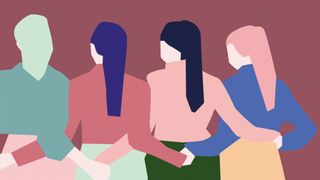
From the Weinstein scandal to controversy over the gender pay gap, gender issues have rarely been out of the headlines in 2017. And illustrators haven't been shy in bringing forth their perspectives on issues of female empowerment and solidarity.
New York-based designer and illustrator Amber Vittoria is among those challenging the societal assumptions placed on women through her defiant work, based around physical traits such as body hair, overtly extended limbs and rounded features. Melbourne-based illustrator Jordyn McGeachin, meanwhile, is focused on normalising notions of women’s sexuality.
Less confrontational but just as powerful is the work of Polish designer and illustrator Weronika Anna Marianna, which explores the “wild and sacred sides” of women, or that of Hamburg-based illustrator Helena Ravenne (above) who recently launched a series called Girls are Back in Town, celebrating talented and strong women.
At one moment, all over the world, 88 artists looked up & drew the sky. The result,"One Sky", launched today: https://t.co/41U9ZjZuO3 pic.twitter.com/PWqy1OfA8B6 September 2017
And it’s not just about individual efforts, but collective action, too. For example, 2017 also saw the launch of Women Who Draw, an online community of female illustrators, artists and cartoonists, with the aim of increasing their visibility and give them a stronger voice worldwide. It’s currently 2,700 creatives strong, and counting.
03. Absurdity and surrealism
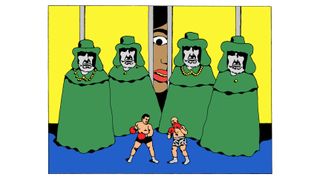
The world of 2017 has felt like a place where, for good or bad, anything can happen and increasingly, anything goes. So it’s not surprising that we’ve seen increased visibility this year for strange and unusual illustration styles.
These include the delightful head-scrambling lunacy of German illustrator Sebastian Schwamm, the delightfully deconstructive visions of Ottowa comic artist Michael Haddad and the futuristic and weirdly subversive stylings of French illustrator Felix Decombat.
Also well worth checking out are the the gruesomely spaced-out sci-fi works of Norwegian illustrator Derek Ercolano, the hilariously surreal work of Russian illustrator Andrey Kasay and the jagged, dysmorphic characters of Oslo-based illustrator and animator Steph Hope.
04. Anxiety and alienation
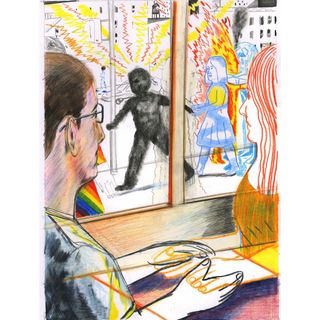
It’s been a year in which all the old norms of politics, society and culture seemed to be crumbling, austerity gathered pace, the distance between citizenry and their representatives widened, and even nuclear war seemingly became a possibility.
This sense of global anxiety and alienation was reflected in the work of a number of illustrators. For example, French artist Yann Kebbi took the ideas of catastrophe and fracturing as the inspiration for a number of impactful pieces, including one for the New York Times, shown above.
And similarly, New York illustrator, printmaker and comic book artist Evan M Cohen’s Noise series portrays the stress, fear and delusion of modern life in stark monochromatic scenes.
Ominous and disturbing, the work of Brooklyn-based illustrator Minju An takes delight in the deconstruction of body parts, while German artist Max Guther draws on the influence of Bauhaus architects to hold up a dispassionate mirror to the empty banalities of modern existence.
Elsewhere, Illustrator Noa Snir’s series Disorder explored a variety of common psychological problems through dramatic black and white linocuts.
05. 1990s retro
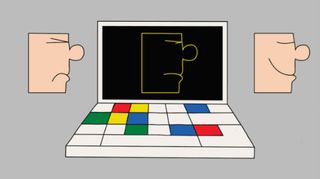
In uncertain times, there’s always safety and comfort to be found in the familiar. For a long while, we’ve all been indulging in 1980s nostalgia, but 2017 saw that finally start to give ground to 1990s retro.
Yes, it’s finally time to look back longingly on the last decade of the last century, and leading the pack is Miami-based illustrator and animator Igor Bastidas, whose work for MTV, Converse and Cartoon Network highlights his love of clean lines and solid colours.
Other exponents of the 90s vibe include Rotterdam-based illustrator Xaviera Altena, whose work is peppered with 90s pop culture references, and Amy Sutton, who’s strongly influenced by the vibrant colours of 90s cartoons.
06. Japanese style
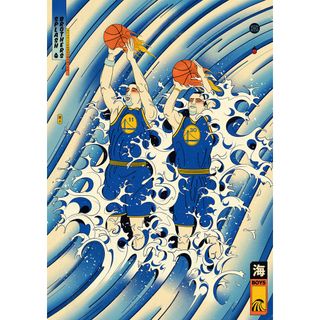
Whether its traditional Ukiyo-e art, anime-style art or artworks inspired by Japanese culture, cities and fashions, one 2017 illustration trend to have continued developing is that of Japanese influence.
Take for example Edo Ball, a series by New Zealand-born, Melbourne-based illustrator Andrew Archer inspired by “basketball, culture, Japan and Ukiyo-e art” (above). Or there’s The Tokyoiter, a spoof illustrated series of tributes to covers of The New Yorker and The Parisianer, established by British illustrator Andrew Joyce, French art director David Robert, and Japanese illustrator and creative director Tatsushi Eto.
The Japanese influence is also central to the work of Nick Alston, a British illustrator based in Tokyo; Karan Singh, an Australian artist and illustrator in Amsterdam; Polish watercolour artist Mateusz Urbanowiczs; and many more besides.
07. Digital meets hand-drawn
A photo posted by @jordan_metcalf on Nov 10, 2017 at 9:09am PST
This 2017 illustration trend isn't new. It's been around for years now – but with mobile creative tech continuing to take over the market, it's set to become one of the strongest illustrations trends of 2018, too.
“Above everything else I’ve seen this year, it’s been illustrators mastering elements of the iPad Pro to sketch and draw in a way that speeds up workflow,” explains Jamie Clarke, who designs illustrative type and lettering and edits the typography blog Type Worship.
“In the lettering world there’s a digital hand-drawn style that's wedging itself comfortably between vector artwork and paper-drawn,” he continues. “Those who are really getting to grips with it, such as the Oregon-based designer Jordan Metcalf, are allowing the technology to influence the final piece.”
The lines between hand-drawn and digital are also being blurred in the work of Chinese freelancer Samuel Chen, who creates digital work that looks like it’s been crafted traditionally. Similarly, Austrian illustrator Nanna Prieler's work is based in physical media but looks like it includes digital elements.
Related articles:

Thank you for reading 5 articles this month* Join now for unlimited access
Enjoy your first month for just £1 / $1 / €1
*Read 5 free articles per month without a subscription

Join now for unlimited access
Try first month for just £1 / $1 / €1
Tom May is an award-winning journalist and editor specialising in design, photography and technology. Author of the Amazon #1 bestseller Great TED Talks: Creativity, published by Pavilion Books, Tom was previously editor of Professional Photography magazine, associate editor at Creative Bloq, and deputy editor at net magazine. Today, he is a regular contributor to Creative Bloq and its sister sites Digital Camera World, T3.com and Tech Radar. He also writes for Creative Boom and works on content marketing projects.
